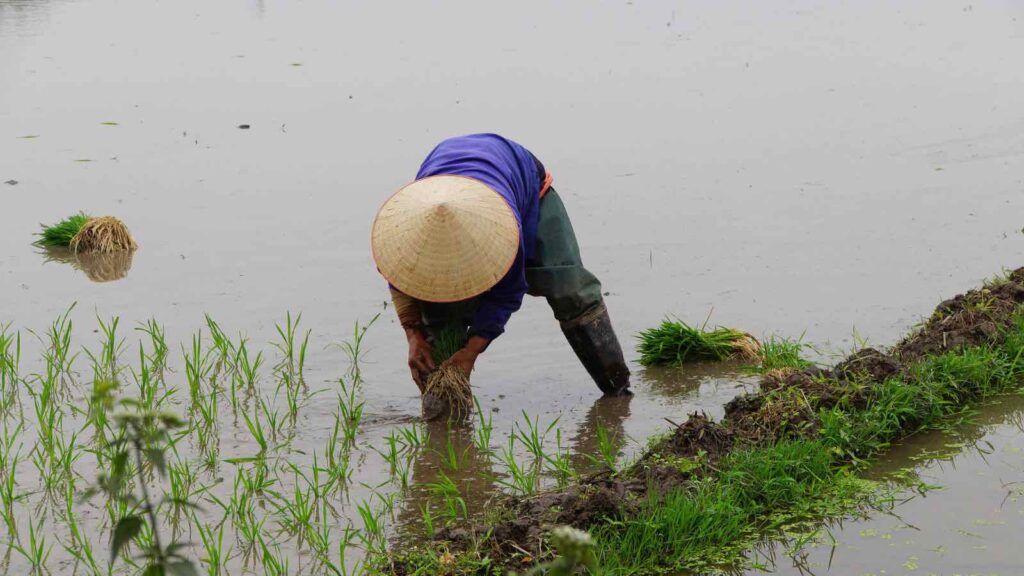As climate change continues to threaten water resources, greywater reuse offers a promising solution for sustainable agricultural water management in Indonesia.
Climate change poses a significant threat to agricultural production in Indonesia, disrupting water supply and affecting crop yields. The unpredictability of rainfall patterns has led to severe droughts in some regions and devastating floods in others, further exacerbating the challenges faced by farmers. As these climate-induced extremes become more frequent, the availability of water resources for agriculture has become a critical issue. Indonesia urgently needs innovative water management strategies to ensure a stable water supply for agriculture, especially as climate conditions continue to worsen.
RELEVANT SUSTAINABLE GOALS



The Potential of Greywater in Agricultural Irrigation
Given the increasing scarcity of clean water, the reuse of greywater—wastewater generated from household activities excluding toilet waste—has emerged as a viable solution to supplement agricultural water needs. Unlike blackwater, which contains human waste and other harmful contaminants, greywater is less polluted and easier to treat, making it a safer alternative for irrigation. Reusing greywater for agriculture not only addresses water shortages but also promotes sustainable water resource management.
However, the implementation of greywater reuse in agriculture comes with challenges. Effective treatment of greywater is essential to ensure that the water is safe for crops and the environment. This article explores the processes involved in greywater treatment and the potential for its application in Indonesian agriculture.
Understanding Greywater: Composition and Treatment
Greywater originates from household sources such as sinks, baths, washing machines, and kitchens. It contains various organic and inorganic substances, including surfactants, nutrients, and trace metals, which vary depending on the source and household activities. To make greywater suitable for agricultural use, it must undergo a series of treatment processes.
Collection and Initial Filtration
The first step in greywater management is the collection from household sources. Greywater is then subjected to initial filtration to remove large particles and coarse debris. Simple filters, such as mesh screens, are often used for this purpose.
Advanced Treatment and Purification
Following initial filtration, greywater must undergo further treatment to ensure its safety for agricultural use. This can involve a combination of physical, chemical, and biological processes. Physical-chemical treatments include sedimentation, filtration through sand or plastic filters, and disinfection to reduce suspended solids and dissolved pollutants. Biological treatments, such as aeration and the use of membrane bioreactors, help degrade organic pollutants and remove harmful substances like phosphorus and ammonia.
Quality Monitoring
After treatment, the quality of the greywater must be closely monitored to ensure it meets safety standards for irrigation. Parameters such as pH, total suspended solids (TSS), total dissolved solids (TDS), biological oxygen demand (BOD), and chemical oxygen demand (COD) are critical indicators of water quality. Regular monitoring ensures that the treated greywater poses no risk to crops, farmers, or consumers.
Distribution and Maintenance of Greywater Systems
Once treated, greywater needs to be efficiently distributed to agricultural fields. This can be done through existing irrigation networks, such as drip or sprinkler systems. For large-scale applications, greywater can be stored in reservoirs or ponds connected to irrigation infrastructure.
The maintenance of greywater treatment and distribution systems is crucial for their long-term functionality. Regular upkeep ensures that the systems operate efficiently and continue to provide a reliable water source for agriculture.
The collective implementation of greywater reuse has been successfully demonstrated in other countries, providing valuable insights for Indonesia. For example, in Lima, Peru, a project supported by the Swiss Agency for Development and Cooperation (SDC) involved 25 communities in treating and reusing greywater for urban landscaping. This project highlights the importance of community involvement and the potential for scaling up greywater reuse in agriculture.
In Indonesia, there have been attempts to use greywater for irrigating rice fields in Bengkulu and Brebes. However, these efforts lacked proper treatment, raising concerns about the safety and quality of the produce. These examples underscore the need for proper greywater treatment and monitoring to ensure safe and sustainable use in agriculture.
The successful implementation of greywater reuse in agriculture requires collaboration among various government agencies and stakeholders. The Ministry of Agriculture, in coordination with the Ministry of Public Works and Housing, should lead the planning and development of greywater infrastructure. The National Research and Innovation Agency (BRIN) can provide expertise in treatment technologies, while the Ministry of Environment and Forestry can oversee water quality monitoring.
As climate change continues to threaten water resources, greywater reuse offers a promising solution for sustainable agricultural water management in Indonesia. With proper treatment and careful planning, greywater can help mitigate water scarcity, support agricultural productivity, and contribute to the overall resilience of the country’s food systems. However, success will depend on the collaboration of government agencies, communities, and stakeholders to ensure that greywater is safely and effectively integrated into agricultural practices.
You may also be interested in :
In Sumatra, A Community Grapples With Water Scarcity Amid Prolonged Dry Seasons


